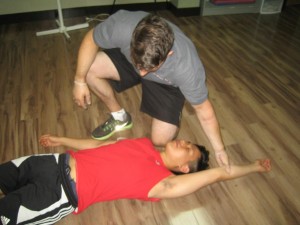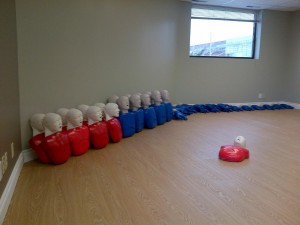With the advent of the recent disasters happening all over the world, the demand for Basic Life Support training has been on the rise. We offer eight programs, five of which are training courses and three are re-certification classes. These classes last 4 to 16 hours in total, with re-certification programs between 4 to 8 hours. Become a training provider today and be prepared to handle whatever emergency you may encounter.
The concept of Basic Life Support
The American Heart Association (AHA) created a set of guidelines for CPR rescuers to follow. The BLS guidelines teach students how to give adequate and timely CPR to rescue a victim of cardiac arrest. The first step to any rescue is to recognize that cardiac arrest has or will be occurring. We teach warning signs to our trainees in all of the programs.
The basic algorithm of the BLS pathway is as follows:
- Is the patient unresponsive?
- If not, ask for help or call emergency services.
- Open the victim’s airway and assess breathing.
- If the victim is breathing irregularly or not breathing at all, start a cycle of chest compressions and rescue breaths immediately (30 compressions to 2 rescue breaths).
- Repeat the cycle until help arrives.
Courses for CPR training

Basic Life Support programs teach trainees how to give one and two-person CPR, depending on the program taken. First aid and defibrillation training is a part of all three courses. Basic first aid skills include wound care and medication administration, among a variety of topics.
- Basic Heartsaver – general public, 4 hours
- Basic Heartsaver (C) – healthcare providers, 4.5 hours
- Basic Life Support – healthcare providers, 4.5 hours (re-certification 4 hours)
The Basic Heartsaver courses teach trainees about rescuing a victim when your alone. This is called one-person rescue. With one-person rescue, the trainee uses the compression-ventilation rate of 30:2 until the arrival of medical help. Basic first aid skills are included, as well as instruction on using an automated external defibrillator (AED).
The Basic Life Support program adds two topics to the curriculum, two-person rescue and the 2010 Basic Life Support guidelines. Two-person rescue involves not merely switching every cycle, but giving 15:1 compression-ventilation rates to prevent fatigue and improve the quality of the CPR given. The BLS guidelines are likewise periodically updated, with the latest ones released back in 2010.Again, first aid and AED training are included in this program as well.
The training certificates

All of our BLS courses award trainees with certification programs. The certificates are renewed every two years through a re-certification courses so they remain valid. If you do not renew your training certificate before the expiration date, you will have to take the entire training program again (instead of re-certification classes which are shorter) to get a new one.
Our training certificates are valid all over the country and will be able to pass whatever requirement for work or school that you need it for. Re-certiifcation is available for only one of our BLS courses, BLS for healthcare providers.